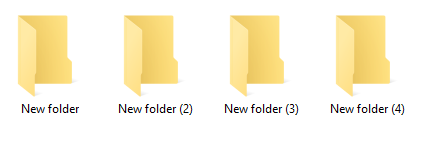文件:
文件被定义为一组存储在二级存储中的相关数据或信息。文件是数据文件或程序文件,前者包含字母数字、数字或二进制形式的数据和信息,后者包含程序代码,也可以执行,是程序文件。
例子: 
文件夹:
它用于包含许多其他文件夹和文件。我们可以有任意数量的文件夹,每个文件夹可以有不同/数量的条目,具体取决于创建的文件,其中每个文件在父文件夹中都有一个位置。
例子: 
文件和文件夹的区别:
| S.No. | Comparison | File | Folder |
|---|---|---|---|
| 1. | Extensions | Files can have extensions. | Folders does not have any extensions. |
| 2. | Organizations | Serial, sequential, indexed sequential and direct file organizations. | Single directory per user and multiple directory per user organization. |
| 3. | Contain other same entity | No. | Yes. |
| 4. | Basic | Collection of data. | A place to store a group of related files and folders. |
| 5. | Space consumption | There is a specific size of a file. | Folder does not consume space in the memory. |
| 6. | Properties | It has Name, Extension, Date, Time, Length and Protection attributes. | It has Name, Date, Time and Protection attributes. |
| 7. | After Creation | After creation, We can open, save, rename, print, email and modify file content. | After creation, We can move, rename and delete folders. |
| 8. | Share on Network | We can not share file on network. | We can share folder on network. |